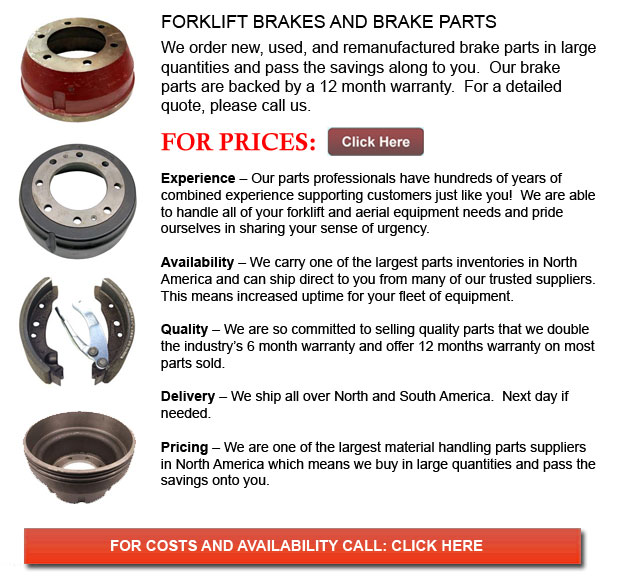
Brake for Forklift - A brake drum is where the friction is provided by the brake shoes or brake pads. The pads or shoes press up against the rotating brake drum. There are several different brake drums types along with particular specific differences. A "break drum" will normally refer to whenever either shoes or pads press onto the inner exterior of the drum. A "clasp brake" is the term used to describe when shoes press next to the exterior of the drum. Another type of brake, referred to as a "band brake" makes use of a flexible band or belt to wrap round the outside of the drum. Where the drum is pinched in between two shoes, it can be known as a "pinch brake drum." Similar to a typical disc brake, these kinds of brakes are rather uncommon.
Old brake drums, before 1955, needed to be consistently adjusted to be able to compensate for wear of the drum and shoe. "Low pedal" can cause the required adjustments are not performed satisfactorily. The motor vehicle can become hazardous and the brakes can become ineffective when low pedal is combined together with brake fade.
There are a variety of Self Adjusting Brake Systems accessible, and they could be categorized within two main types, RAD and RAI. RAI systems have built in equipments which avoid the systems to be able to recover if the brake is overheating. The most well known RAI makers are AP, Bendix, Lucas, and Bosch. The most well-known RAD systems consist of AP, Bendix, Ford recovery systems and Volkswagen, VAG.
The self adjusting brake would usually only engage when the forklift is reversing into a stop. This method of stopping is acceptable for use where all wheels use brake drums. Disc brakes are used on the front wheels of vehicles today. By functioning only in reverse it is less probable that the brakes would be applied while hot and the brake drums are expanded. If adapted while hot, "dragging brakes" can occur, which increases fuel consumption and accelerates wear. A ratchet mechanism that becomes engaged as the hand brake is set is another way the self adjusting brakes could operate. This means is only appropriate in functions where rear brake drums are utilized. If the parking or emergency brake actuator lever goes over a particular amount of travel, the ratchet improvements an adjuster screw and the brake shoes move in the direction of the drum.
Located at the base of the drum sits the manual adjustment knob. It can be tweaked using the hole on the opposite side of the wheel. You will have to go underneath the vehicle with a flathead screwdriver. It is extremely significant to be able to adjust each and every wheel evenly and to move the click wheel properly as an uneven adjustment could pull the vehicle one side during heavy braking. The most effective method in order to make sure this tiresome task is done safely is to either raise each and every wheel off the ground and hand spin it while measuring how much force it takes and feeling if the shoes are dragging, or give everyeach and every one the exact amount of manual clicks and then perform a road test.
![]() Click to Download the pdf
Click to Download the pdf
Forklift Parts
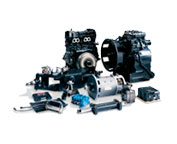
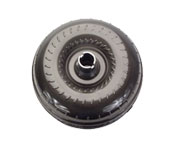
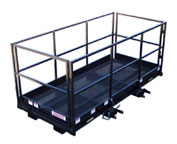
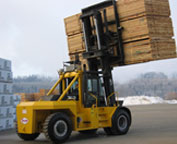
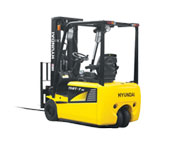
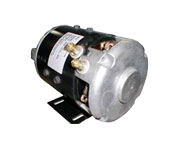
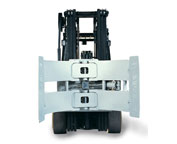
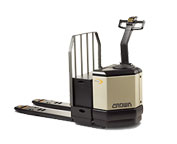
Lift Parts Express
TOLL FREE: 1-888-695-7994
forkliftpartsnewjersey.com
Email Us
About Us


